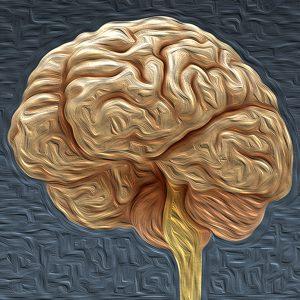Whoever said parenting was easy? Is it too much to ask that when spending time with children we—and they—survive the many challenges and thrive?
Dr. Tina Payne Bryson, co-author of the book “The Whole-Brain Child,” helps parents, educators and caregivers to do just that by explaining the way children’s brains are developing and teaching how to respond appropriately.
Kirsteen Wolf
The Broadside
On a recent visit to COCC, psychotherapist and author Tina Payne Bryson shared insights from her book “The Whole Brained Child.” The mother of three offered strategies to raise “calmer, happier children” and ways for parents to navigate day-to-day struggles.
“I felt the energy on Friday was tangible—every person left that night with new tools for connecting with the children in their lives and for supporting learning and development,” said Amy Howell, director of Early Childhood Education at Central Oregon Community College.
Bryson, along with coauthor Daniel J. Seigel, offer practical, scientifically-based information to help those who work with children to become “brain architects” by understanding the interplay between the right and left hemispheres and the “upstairs and downstairs” brains. The 12 strategies they offer in their book “The Whole Brain Child” can help those who work with children navigate a crisis but also connect with children on a deeper level to build a foundation of understanding.
Bryson’s lecture was funny—some of her slides had the audience in stitches—and presented in a very easy-to-understand style. She connected with an audience that was there to learn to be better parents, caregivers and educators.
“What I most appreciated about [the] presentation was Dr. Bryson’s emphasis on relationships,” said Howell. “ Even in our moments of limited resources—time, energy—we can take simple steps to connect with our children on both emotional and rational levels.”
This is accomplished through integration between the logical left brain and the emotional, “out of control” right. If a child is in a right brain state, the advice in “The Whole-Brain Child” is to approach the situation with right-brained language and slowly move them over toward a left brain outlook and vice versa. The key is maintaining balance. It’s like you are floating down a river with ”rigidity” on one side and “chaos” on the other and your goal is to stay balanced in the middle. The same is true for the integration between the still developing “upstairs” brain —the middle prefrontal cortex—with the primitive fight-or-flight “downstairs” brain.
It may sound complicated, but like Bryson’s lecture, the information in the book is very simple and easy to apply according to Anna Higgins, instructor in the ECE department and member of the COC-OAEYC.
“As a parent, I was able to read a chapter at night and start applying it the next day with my children,”she said.
Higgins hopes the event served as a springboard for further conversation and community building.
“The more we know,” she said “The better we do.”
The left brain desires order. It is “logical, linear, linguistic “ and loves a good list. The left hemisphere helps you organize your thoughts into sentences. “The Whole Brain Child” emphasizes “integration” between the two hemispheres so that people of all ages can experience a sense of well being. Living too much in the left hemisphere can lead to lack of flexibility and an unwillingness to adapt or compromise. The right brain is holistic, experiential, nonverbabal and emotional. Our right brain cares about the big picture and it specializes in “images, emotions and personal memories.” Living in this hemisphere without the influence of the left can lead to chaos, confusion and turmoil.
(Contact: [email protected])








